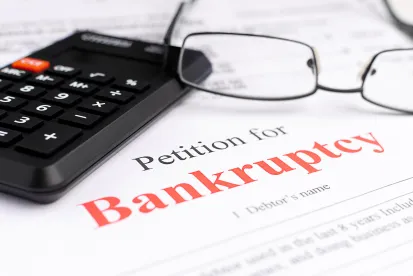The automatic stay is a procedural tool in a bankruptcy case that effectively halts efforts by creditors to collect on a debtor’s outstanding obligations. As discussed in more detail in our prior post, immediately upon the filing of a bankruptcy petition, a “bankruptcy estate” is created, which includes virtually all assets of the debtor. Upon the filing of the petition, to avoid a violation of the automatic stay, creditors must refrain from, among other actions, continuing to pursue a claim against the debtor, enforcing a judgment against the debtor, seeking to obtain possession of property of the bankruptcy estate, and attempting to create, perfect, or enforce any lien against property of the estate. This immediate pause in collection efforts works to protect the debtor by allowing a reprieve from creditors’ collection efforts. Also, the automatic stay helps to ensure that no creditor receives a distribution greater than what that creditor would be entitled to under the Bankruptcy Code. Because the Bankruptcy Code allows debtors to recover damages from creditors who act in violation of the automatic stay, creditors should proceed with care in order to avoid creating a basis for such relief.
For business creditors, navigating issues arising from the automatic stay can present unique legal and strategic challenges. One important legal issue presented by “small business cases” (defined in the code and essentially a case where a debtor is a private company, has total debts under a threshold amount, and has not elected for Subchapter V to apply) is that the automatic stay may not apply to the case. Section 362(n) of the Bankruptcy Code provides an exception to the automatic stay and applies when a debtor files a bankruptcy case while having a small business case pending or within two years of having a plan confirmed or having a case dismissed in a small business case. Therefore, when a debtor falls within this exception, a secured creditor’s acts to obtain possession of property of the estate are not barred by the automatic stay.
If the automatic stay does apply, however, it is not a permanent restriction. A secured creditor can obtain relief from the automatic stay to take possession of its collateral. The basic grounds for obtaining stay relief are (i) showing cause or (ii) showing that, with respect to a stay of an act against property, the debtor does not have equity in the property and the property is not necessary for an effective reorganization.
Although the method for obtaining stay relief is similar among both business and consumer bankruptcy cases, creditors will benefit from employing varying strategies based on the type of case. Two strategic questions that arise in business bankruptcies include (1) when to seek stay relief and (2) what types of assets to move for stay relief on.
Timing of stay relief
Under the bankruptcy court’s procedural rules, stay relief is granted on a motion by the party seeking relief from the stay. So, a secured creditor has control as to the timing of its motion for stay relief and should consider this timing as part of its overall strategy. Moving for stay relief early in the case can benefit a creditor, even if unsuccessful, by laying a foundation for cause to lift the stay later in the case. Additionally, the Bankruptcy Code terminates the stay 30 days after a request for relief unless the court orders the stay to continue. Further, a motion for stay relief can be a prerequisite for obtaining adequate protection, which is more frequently provided in business bankruptcies than consumer cases. More information about adequate protection will be discussed in future Bradley’s Bankruptcy Basics posts.
Operating business debtors file for bankruptcy under Chapter 11 or Subchapter V of the Bankruptcy Code. In a Chapter 11 or Subchapter V case, a creditor’s need to seek stay relief will generally terminate upon plan confirmation or dismissal of the case. At that point, estate property can be returned to the creditor, and if the plan is confirmed, the debtor can be discharged from all dischargeable prepetition debts. As a reminder, Chapter 11 and Subchapter V cases are unique and differ from one another because a primary purpose of Subchapter V is to facilitate small business reorganizations, but for either type of case, the confirmed bankruptcy plan becomes the governing contract between a debtor and its creditors. As such, creditors are reminded to carefully review the plan and update their accounts and procedures accordingly.
If a creditor has a perfected security interest and believes it will receive more value by accepting payments under the plan than it would by taking immediate possession of the collateral, the best strategy for the creditor may be to wait for confirmation, let the automatic stay terminate, and then seek recovery against the collateral if the debtor defaults following confirmation. As such, it is important for creditors to carefully weigh their treatment under the proposed plan against the cost of obtaining stay relief and liquidating the collateral. Oftentimes, it makes sense for creditors to proactively discuss their options with the debtor’s counsel to negotiate an amicable resolution rather than incur the costs of stay relief and collateral liquidation early in the case. Of course, if the debtor is unwilling to negotiate or nonresponsive to communications, filing a motion for stay relief may light a fire, so to speak, that will bring the debtor to the bargaining table.
Assets to target for stay relief
From a practical perspective, the unique circumstances of a bankruptcy case will determine which specific assets a creditor will target for stay relief. But a basic analysis that a secured creditor should consider at the outset is whether its collateral is more valuable in or out of the estate. This can be a simple consideration, such as in a Chapter 7 liquidation, where obtaining collateral as quickly as possible likely preserves the most value. This consideration becomes more complicated in a Chapter 11 reorganization that requires the creditor to weigh the value of possessing its collateral quickly against the potentially greater value available from a debtor’s successful completion of the plan or the possibility that the value of the collateral could be enhanced by the debtor (e.g., collateral that is in process inventory could become more valuable as the case progresses).
A clear example of an asset that a creditor would want to move for stay relief on is one for which the second grounds for stay relief (i.e., the debtor has no equity and that is not necessary for an effective reorganization) clearly applies. If the debtor does not need the collateral for its reorganization, it is unlikely that the collateral’s value will be increased by remaining a part of the bankruptcy estate. However, the creditor has the burden of proving that the debtor has no equity in the collateral, so the creditor must weigh how difficult it will be to prove the value of its collateral. In the simplest case, a debtor’s own schedules will show that the debtor has no equity in the property, but in other cases, valuation of assets will require an appraisal and testimony from an appraiser or expert witnesses, and these additional steps increase the cost of obtaining the relief.
Conclusion
The decision to seek relief from the automatic stay raises both legal and strategic questions. In making the decision, a secured creditor should be mindful of the strategic decisions while avoiding a violation of the stay by only taking actions to obtain collateral with the court’s permission.




 />i
/>i
